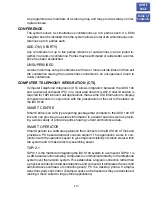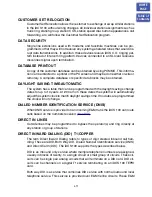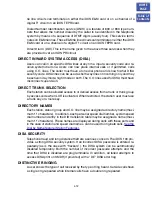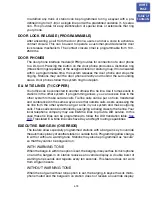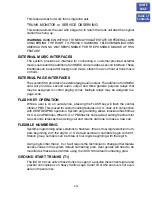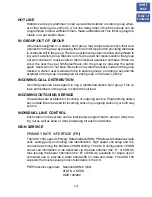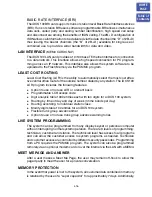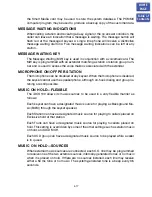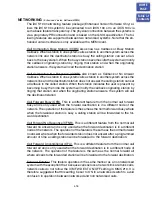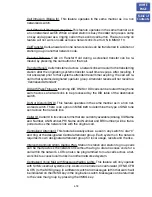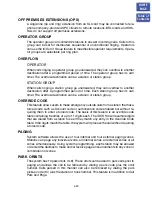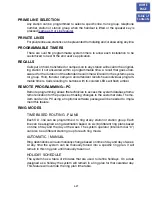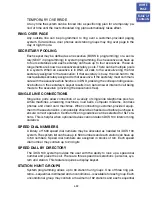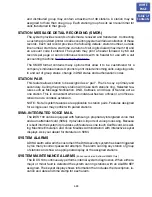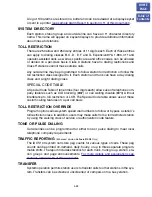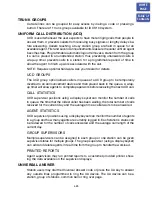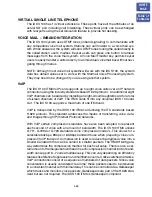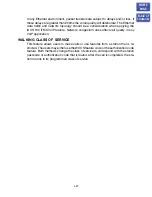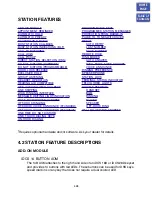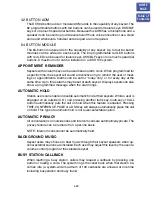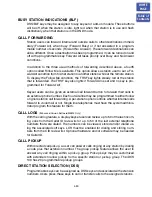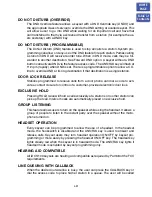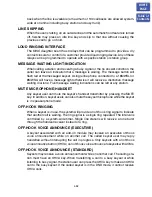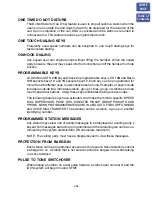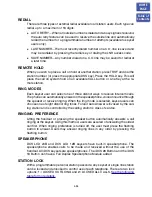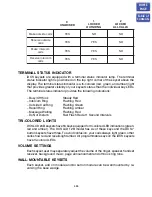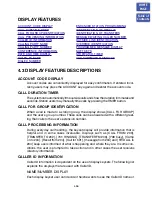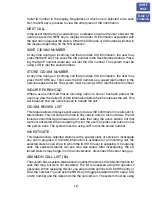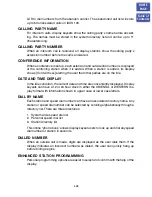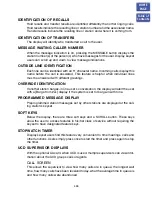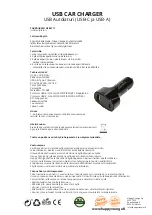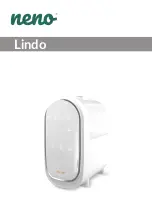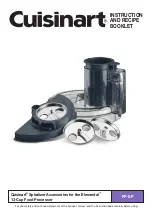
A log of 100 alarms are stored in a buffer and can be reviewed at a display keyset
or sent to a printer
(see sample Alarm Report in section 4.11 of this document)
SYSTEM DIRECTORY
Each station, station group and outside line can have an 11 character directory
name. This name will appear on keyset displays to provide additional information
about lines and stations.
TOLL RESTRICTION
There are 250 allow and 250 deny entries of 11 digits each. Each of these entries
can apply to dialing classes B, C, D , E, F and G. Expensive 976, 1-900, 411 and
operator-assisted calls, as well as specific area and office codes, can be allowed
or denied on a per-class basis. Class A stations have no dialing restrictions and
Class H stations cannot make outside calls.
Any outside line may be programmed to follow station toll restriction or follow the
toll restriction class assigned to it. Each station and trunk can have a day dialing
class and a night dialing class.
SPECIAL CODE TABLE
A Special Code Table of ten entries (four digits each) allows use of telephone com-
pany features such as CID blocking (
✱
67) or call waiting disable (
✱
70) without
interference to toll restriction or LCR. The Special Code table allows use of these
custom calling features on a per call basis.
TOLL RESTRICTION OVERRIDE
Program options allow system speed dial numbers to follow or bypass a station’s
toll restriction class. In addition, users may make calls from a toll restricted station
by using the walking class of service or authorization code feature.
TONE OR PULSE DIALING
Outside lines can be programmed for either tone or pulse dialing to meet local
telephone company requirements.
TRAFFIC REPORTING
(Enhanced Version Software/MEM4 Only)
The iDCS 100 system can store peg counts for various types of calls. These peg
counts can be printed on-demand, daily, hourly, or up to three separate program-
mable shifts. The report includes statistics for each trunk, trunk group, station, sta-
tion groups and page announcements.
For more details and explanations see
sections 4.9 and 4.10 of this document.
TRANSFER
System operation permits station users to transfer calls to other stations in the sys-
tem. Transfers can be screened, unscreened or camped-on to a busy station.
4.24
HOME
PAGE
Table of
Contents

